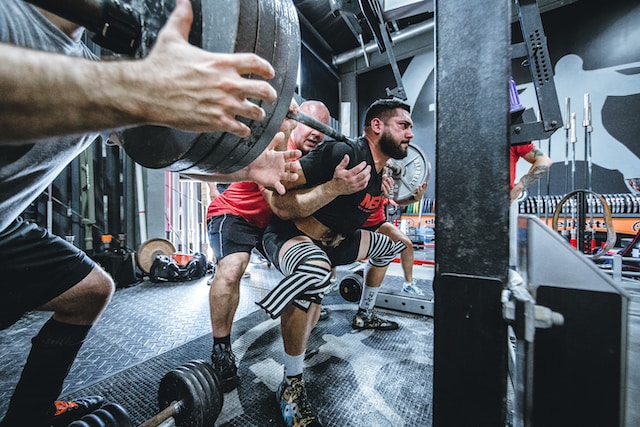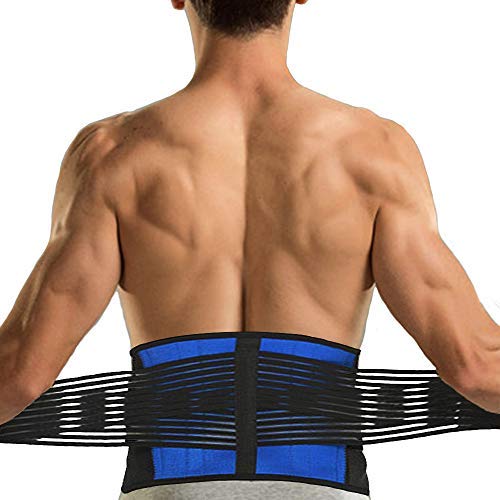The Role of Lumbar Support Belt in Sports

Lumbar support belts have become a prominent accessory in the sports world, playing a significant role in improving performance, maintaining correct posture, and helping in injury prevention. These belts offer necessary support to the lower back, lending stability, providing pain relief, and enhancing power and strength in heavy lifting activities. This blog post aims to delve deeper into the critical role these braces play across various sports.
How a Lumbar Support Belt Works
A lower back support belt functions as a supportive brace, used around the waistline. Its primary purpose is to provide stability and limit the motion of the lumbar spine. It is designed intelligently with materials offering flexibility and robustness, ensuring comfort without compromising support. Structurally, it’s tailored to fit snugly around your waist and typically comes with adjustable straps for a custom fit. The effectiveness of these belts lies in their functionality; they work by reducing the load on the lower back, providing immediate relief from pain and strain.
Importance of Lumbar Support in Sports
Maintaining Right Posture
Using a back belt assists with sustaining an appropriate posture, particularly during strenuous physical activities. Providing necessary back support helps maintain the natural curve of the spine, resulting in better posture and a reduced risk of postural problems.
Preventing Sports-related Injuries
The belt works as a preventive measure, ensuring that athletes don’t overstretch their back muscles, leading to sprains or strains in the lower back region
.Enhancing Performance
It works by enhancing body mechanics and making movements more efficient. The belt acts as a physical reminder to keep the back straight, resulting in better form, improved power, and increased efficiency.
Providing Targeted Support and Relief
Lumbar support belts offer targeted relief and support to the lower back region. With the right fit and usage, they can reduce discomfort, improve balance, and allow athletes to perform better for longer durations.
The Science Behind Back Support Belts
Fundamentally, they work by adding pressure and reducing the stress on certain areas of the lower back. This compression creates a wall for your abs to push against, thereby generating more force, reducing the load on the spine, and preventing the overuse of back muscles.
Research has shown a myriad of benefits associated with the use of support belts. One key finding is their role in reduced spinal flexion and rotation during lifting, contributing to lower injury rates. Also, studies confirm their effectiveness in improving proprioception, and the sense of relative positioning of body segments, leading to better form and movement control.

Specific Examples of Sports where Back Belts are Essential
Powerlifting and Weightlifting
In sports such as powerlifting and weightlifting where massive loads are involved, belts for back pain provide the stability required to lift safely. It offers core stabilization and aids in maintaining the correct form during lifts. The belt helps athletes lift heavier weights more safely and effectively, providing the spine with the necessary compression for stability during heavy lifting.
Wrestling
In wrestling, athletes can benefit from belts by preventing hyperextension and reducing strain on the back muscles during strenuous grappling and lifting maneuvers.
Crossfit Training
Crossfit combines several high-intensity exercises that involve rapid, powerful movements. Here, a back support belt helps maintain correct posture and provides support, especially during heavy lifts or movements that could strain the lower back.
Running
Long-distance runners use belts for support to minimize the impact of running on the lower back. These belts promote a healthy running posture and absolve some strain from the back resulting in a more comfortable, extended running experience.
Cycling
When cycling, especially for long distances, braces provide comfort and posture support, and reduce fatigue in the lower back muscles. This aids in maintaining balance and steady pedaling over extended periods.
Horse Riding
They provide critical lower back support needed to handle unexpected jolts and movements, reducing the risk of injury.
Bodybuilding
Bodybuilders often use back braces during intense training sessions. They help maintain proper form during heavy lifts and protect the lower back from injuries, playing a crucial role in a bodybuilder’s training regimen.
Tips for Choosing the Right One for Sports
- Evaluating Quality and Durability: The belt’s quality and durability are key factors influencing its effectiveness and lifespan. High-quality, sturdy material is essential for a belt that can withstand intense sports activities and provide desired support over time;
- Finding the Correct Sizing: The belt should neither be too tight, causing discomfort nor too loose, undermining its support function. An ideal fit is one that provides optimal support and comfort at the same time;
- Specific Sports Needs: Different sports may require slightly different functionality from a lumbar belt. For instance, belts used in weightlifting may require additional stiffness and a higher support level compared to those used in cycling or running. Thus, the choice should align with the specific requirements of your sport;
- Adjustability: A good back brace should have an adjustment feature. This allows you to control the degree of compression and achieve a custom fit, enhancing both comfort and efficiency;
- Support Level: Some belts offer higher levels of support, recommended for high-intensity sports or athletes with previous injuries, while others provide moderate support, suitable for low-impact sports or preventive use. Your choice should align with your individual support needs for your sport.
Real-life Testimonials
The true value of belts for support is often better understood through the experiences of athletes who have incorporated these accessories into their training regimens.
Professional powerlifter Patterson Smith has been using lower back support belts for years. He notes that the belt has increased his lifting capacity and reduced post-workout strain, recounting, “I found the belt to be a game-changer; it significantly eases the load on my lower back and provides me with the stability.”
Cyclists have also found value in lumbar belts. Laura Thompson, a long-distance cyclist, emphasizes that wearing a belt has helped with her endurance. “The belt allows me to maintain a comfortable position while cycling for extended periods. My lower back pain has diminished significantly since I started using this belt.”
Runner Mark Johnson shares similar sentiments, highlighting how it improved his running posture and reduced discomfort in his lower back during long runs. “Running became more enjoyable after I started using the lumbar belt,” he says.
The stories of these athletes highlight how these belts can enhance performance, alleviate discomfort, and assist athletes across various sports, reinforcing their utility and effectiveness.

My Experience
As an athlete, using a back belt has significantly improved my sporting performance and overall physical health. I’d like to share my experience with the Ortorex Lumbar Support Belt. This belt’s appealing design and high-quality materials, like neoprene, immediately caught my attention when I first came across it. After trying it on, I was impressed by its comfortable fit and the immediate sense of stability it provided to my lower back.
Over time, I noticed a marked improvement in my training sessions. The Ortorex belt provided the support needed for those intense workouts, reducing strain and fatigue in my lower back. I was able to execute movements more effectively while maintaining a good posture. This, in turn, led to improved performance and a reduced risk of injuries. It also encouraged me to push my boundaries during workouts, knowing the belt was there to help handle the increased load and protect my back.
I used to experience discomfort in my lower back during and after sessions, which was becoming a hindrance to my progress. However, once I incorporated it into my routine, I saw a significant decrease in this discomfort. Given these improvements and the heightened level of comfort during training, I can confidently vouch for the belt. The belt that has greatly improved my training sessions is accessible at https://ortorex.ie/p/lumbar/, and I encourage fellow athletes to consider investing in one for improved comfort and performance.
Advice from the Professionals
According to physical therapists, a support belt for the lower back can be beneficial when used correctly. They assert that these belts can reduce the risk of injury, assist in maintaining a correct posture, and alleviate back pain. However, they also stress the importance of using these belts as an aid, and not a replacement for strengthening back and core muscles.
Moreover, experienced coaches insist on the proper usage of support belts to reap maximum benefits. They highlight that it’s crucial to wear the belt correctly, fastening it around the natural curve of the back, and adjusting it to a snug, comfortable fit. These belts are meant to be worn sparingly, as overuse could lead to reliance and potential weakening of core muscles. Instead, they recommend its usage during high-intensity workouts or activities placing significant strain on the lower back.
References
https://www.cdc.gov/niosh/docs/94-127/default.html
https://www.health.harvard.edu/healthbeat/back-belts-dont-replace-the-need-to-lift-correctly
https://www.sciencedirect.com/science/article/pii/S1877065720301202


